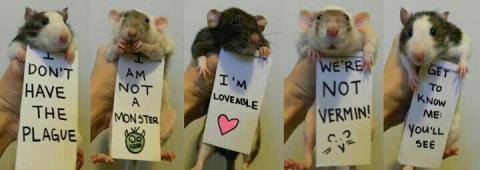
You wouldn’t think that rats — prodigious breeders that have survived and thrived for millennia despite arousing the acute disdain of much of mankind — would require any sort of rescuing.
As with cats and dogs, however, rats are firmly established as companion animals deserving of humane care who sometimes require the intervention of dedicated two-legged helpers when society at large fails to deliver on its implied (and ethical) promise to serve as benevolent stewards.
Ottawa Pet Rat Rescue (OPRats), a registered, non-profit organization working to raise awareness and share information about pet rats, aims to address this gap in human-rat care.
As OPRats states on its informative yet playful website, “We are involved in local rescue, fostering, and adopting. We advocate adoption over purchasing rats from pet stores or breeders, as the supply of rats far exceeds the demand, and the conditions at commercial breeders who supply pet stores with their rats are inhumane.
“Our mission is to encourage, educate and support rat parents and potential rat parents so that more rats can have happier, healthier lives.”
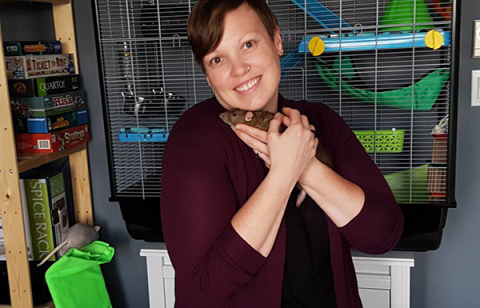
Elsewhere, the site offers practical advice on how best to care for pet rats, covering housing concerns, health, diet, and socialization plus a check-list for aspiring rat parents — do you have the space, the time, the finances, the blessing of parents/landlord/partner? — to ensure successful rat integration into the household. Did you know, for example, that neither pine nor cedar is suitable for rat bedding or the pros and cons of generic rabbit cages over Martin's Cages (and never, ever aquariums)?
The adoptions page is pretty persuasive, too, with pairs like Seth and Rogan, and Willy and Gulliver angling to find their forever homes.
Rachel Shen founded OPRats with Anita Utas; the pair continue to serve as directors of the org and its most impassioned cheerleaders, with Shen handling the frontline work and Utas offering backend “rat care advice,” according to the site. Before joining forces in 2012, Shen and Utas were both involved separately in rat care.
Samaritanmag spoke to the supremely affable and knowledgeable Shen about the challenges of running an independent rescue, especially one devoted to creatures with optics problems dating back to the Black Plague of the 14th century… and still very much in evidence today.
When you were setting up OPRats, did you look to other groups for ideas?
No. Anita has been a long-time animal rights activist, and vegan and I was vegetarian and involved in animal rights causes locally. After we met, we just did a lot of animal rights stuff together so no actual rescue experience,e but a lot of experience with animal rights.
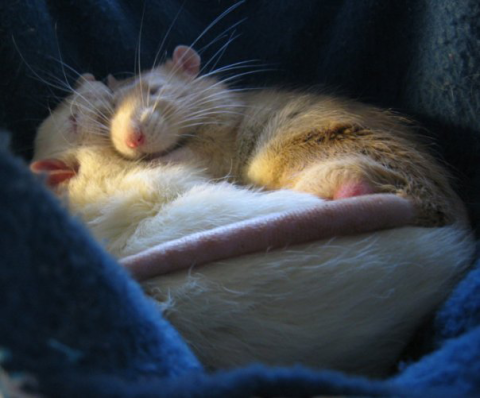
No, we actually get a lot of rats from high-kill shelters or shelters that don’t have the resources to take care of the rats. That’s actually less risky for us because if we take rats from owners, we don’t know if they’re lying to us about health conditions or where the rats came from. It’s not that we’re afraid of getting sick [from the contact with rats]; we don’t want our healthy rats picking something up from surrendered rats we don’t know the history of. Rats from shelters have typically been seen and screened by vets on staff. Shelters can flag potential illnesses. We do accept some owner-surrenders, but it’s limited and based on the availability of foster homes.
With most animal rescue orgs, foster availability tends to be the bottleneck.
Actually, we have no shortage of college students willing to foster who are unable to afford to adopt. Because rats are a small animal kept in cages about 80 percent of the day, they’re easy to manage, not super-time consuming, Students want a companion animal, but often don’t have the space for one. Our problem is finding adopters for any rat over a year old or a rat with any kind of chronic illness, even if it’s easy to treat. People will adopt cats with diabetes, but the minute a rat has a weepy eye, it’s a no-go. Colour also really matters among rats. Our black, brown, and albino rats almost never get adopted. People will specifically tell us they don’t want a black rat because to them, they look like sewer rats. With albino rats, it’s the pink eyes. I mean, they are gorgeous and pure white, but their eyes look translucent as if they’re glowing.
Back to college students as willing fosters. How come they’re not stigmatized about rats?
I’m not sure! I suspect there was more stigma around rats in my parents’ generation. But rats became commercially available in pet stores in the millennial generation, so maybe that’s why they seem less scary. Plus, there’s been positive portrayals in pop culture; the children’s movie Ratatouille, the Redwall series, which featured both rats and mice, and the Teenage Mutant Ninja Turtles had their rat master trainer Splinter. So many rats end up being named Splinter because of that character.
OPRats always offers rats for adoption in pairs and trios. Is that because they become bonded the ways cats can?
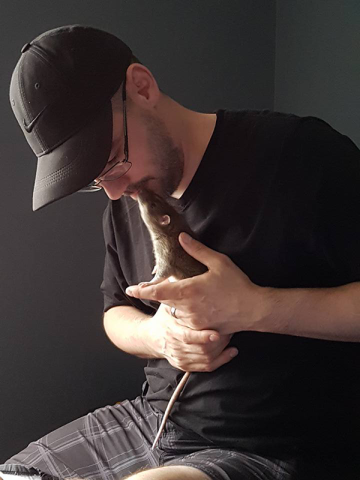
Is it possible to put the rat-rescue situation into perspective? How big is this problem?
I really don’t know. You see euthanasia stats for dogs at shelters in the U.S. for example and it’s pretty depressing. The majority of domesticated rats out there are not pets. In Ottawa, where we have two universities and a big college, there are probably more rats in labs being used for testing than there are for pets. Untold numbers of rats can be used for one test and they all die on the necropsy table. There’s no retirement plan for rats. Rats are used for testing because they’re cheap, they’re docile, they share genetic traits with us and they have absolutely no rights. You can do whatever you want to them in a lab environment with no restrictions. Feeder rats and pet rats come from the same rat mills. If they are plainer looking, they become feed. If they are fancier looking, they become pets. So how to calculate that?
What are some other cool/adorable/fascinating things people should know about rats?
They’re smart and easy to train because they are very motivated by food. Google ‘rat agility’ and you’ll find people doing it on YouTube. Yes, rats are very rodent-like but the environment they’re raised in, if it’s enriched, can have quite an impact on their behaviour and they can go far beyond what you might expect. Of course, if the animal is locked in a tiny hamster cage, you can’t expect too much. It would be like locking a child in a room. You can’t develop mentally without stimulation.
Fundraising is always a challenge for charities. What’s been most effective for you?
We’re actually kind of bad at fundraising (laughs) and we’re lucky to have very supportive friends. We sell a calendar each year featuring all the rats that have been adopted; we usually sell about 80 a year for $20 each. And we’ll do two to three fundraisers at Pet Valu each year with a bake sale, cards, calendars, nail trims for small animals like rats and rabbits. We do make some money selling rat hammocks from fabric we get at places like Value Village. The 50th anniversary sale at Fabricland last April was a boon (laughs). I was lined out the door. Once or twice since 2013 we’ve had an unsolicited donation. Luckily, it’s not as expensive as with cats and dogs.
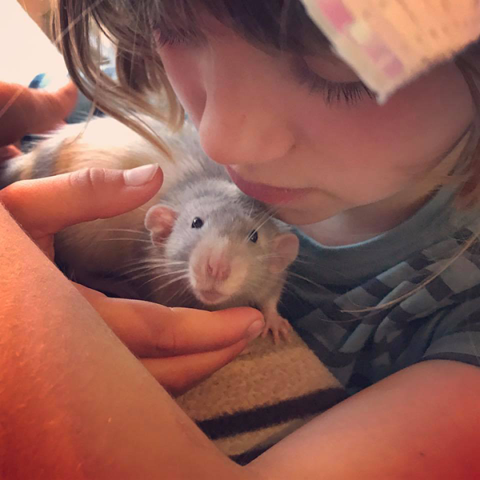
What’s the most important thing for people to know about Ottawa Pet Rat Rescue?
It’s essential that people regard animals as a commitment and a responsibility and not a right. You cannot put your own needs above those of an animal. And that’s especially easy to do with rats who are seen as cheap, throw-away beginner pets. The number of people who contact us saying ‘We actually want a dog but we want to first see if our four-year-old will be gentle enough.’ Ah… no. These are living beings. People must take responsibility and they must, must spay and neuter. Animals are innocent, and we must ensure they live a good life. If you can’t, don’t adopt.
(Support Samaritanmag's original journalism by making a PayPal contribution to info@samaritanmag.com so we can increase the amount of content and writers we hire. Samaritanmag is the anti-tabloid, covering good people trying to change bad things)
『アディダス』に分類された記事一覧